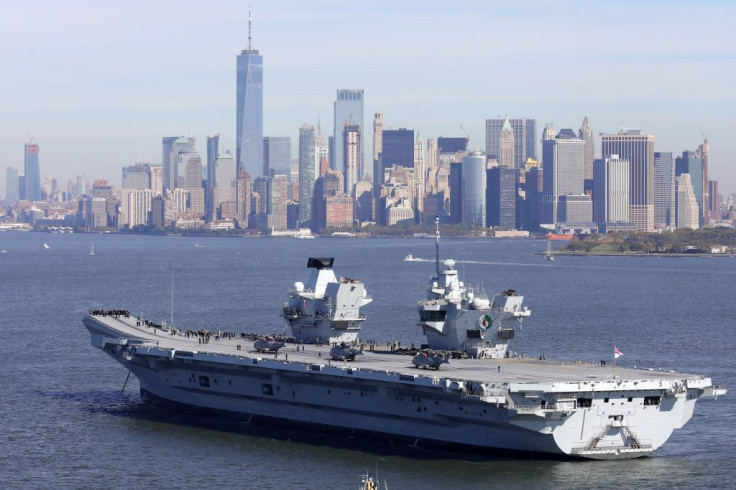South China Sea: Royal Navy Leads Carrier Flotilla To Contested Waters
KEY POINTS
- Britain's Queen Elizabeth flagged off the ship Saturday
- The warship will lead a flotilla of British, US, and Dutch ships
- The warship is expected to pass through the South China Sea
China and its territorial ambitions in the South China Sea face another hurdle as UK's biggest warship HMS Queen Elizabeth set sail to the disputed waters on its maiden operational voyage.
The 65,000-ton warship with a 1,700-strong crew will lead a flotilla of British, U.S., and Dutch ships on its journey of 26,000 nautical miles over 28 weeks, reports CNN.
The Carrier Strike Group, which includes two destroyers, two frigates, a submarine and two support ships, was given a royal sendoff by Britain's Queen Elizabeth in Portsmouth Saturday. The warship will carry eight British F-35B fighter jets and 10 US Marine Corps F-35s as well as 250 US Marines as part of the crew.
According to the UK Defense Ministry, the flotilla will be the largest concentration of maritime and air power to be deployed from the UK in a generation. "When our Carrier Strike Group (CSG) sets sail, it will be flying the flag for Global Britain -- projecting our influence, signaling our power, engaging with our friends and reaffirming our commitment to addressing the security challenges of today and tomorrow," UK Defense Secretary Ben Wallace said last month while announcing the voyage.
Nine ships, more than 30 stealth fighter jets and helicopters and around 3,700 personnel have sailed this weekend as part of the #UKCarrierStrikeGroup. Their global deployment will take them 25,000 nautical miles to 40 nations and across three oceans.
— Royal Navy (@RoyalNavy) May 23, 2021
🔗 https://t.co/8Lzyf6P4Bb pic.twitter.com/8pAa1MGkKj
While the task group will visit India, Japan, South Korea, and Singapore, the voyage through the South China Sea is seen by many as a significant move aimed at countering China's increasing belligerence in the region.
The carrier group is also expected to pass to the east of Taiwan, which is facing increased incursions from PLA in the form of naval and air deployments.
In its defense review, the British government had recently called out challenges posed by China. Describing Beijing as "the biggest state-based threat to the UK's economic security," the review had stressed Britain's plans to increase its military presence around the world. The carrier strike group's presence on the South China Sea is a reflection of British policy, reported CNN.
Security analysts too see Britain's move as a genuine effort to "support allies in the region and enforce freedom of navigation and promote democracy." According to Alessio Patalano, an expert in East Asian warfare and security at King's College, University of London, this, for the UK, is an "opportunity to make a statement about not accepting behavior that undermines the maritime order."
"The South China Sea is also essential to global trade and transportation. It is also about supporting important partners in the region like Japan, India, Australia and the United States. The message to China is, 'we are not here to antagonize and will not accept bullying," Patalano was quoted by Tokyo-based Kyodo News.
However, Defence Secretary Ben Wallace insisted Britain is not looking for a "confrontation". Instead, he says the carrier group will exercise its right to freedom of navigation, said a BBC report.
In 2018, another Royal Navy Warship, HMS Albion, sailed close to the disputed Paracel Islands, angering Beijing which called Royal Navy's actions provocative.

© Copyright IBTimes 2025. All rights reserved.





















